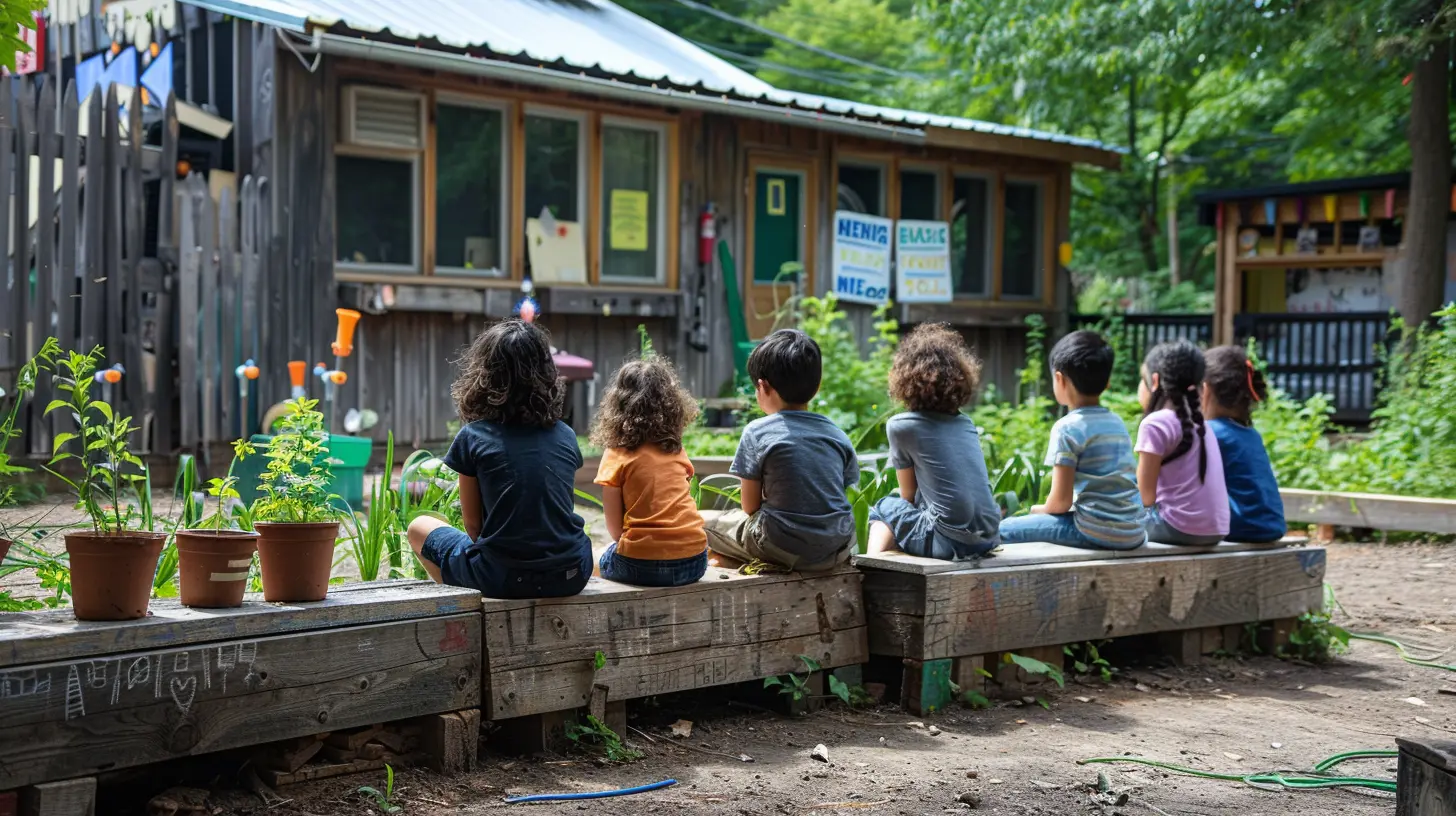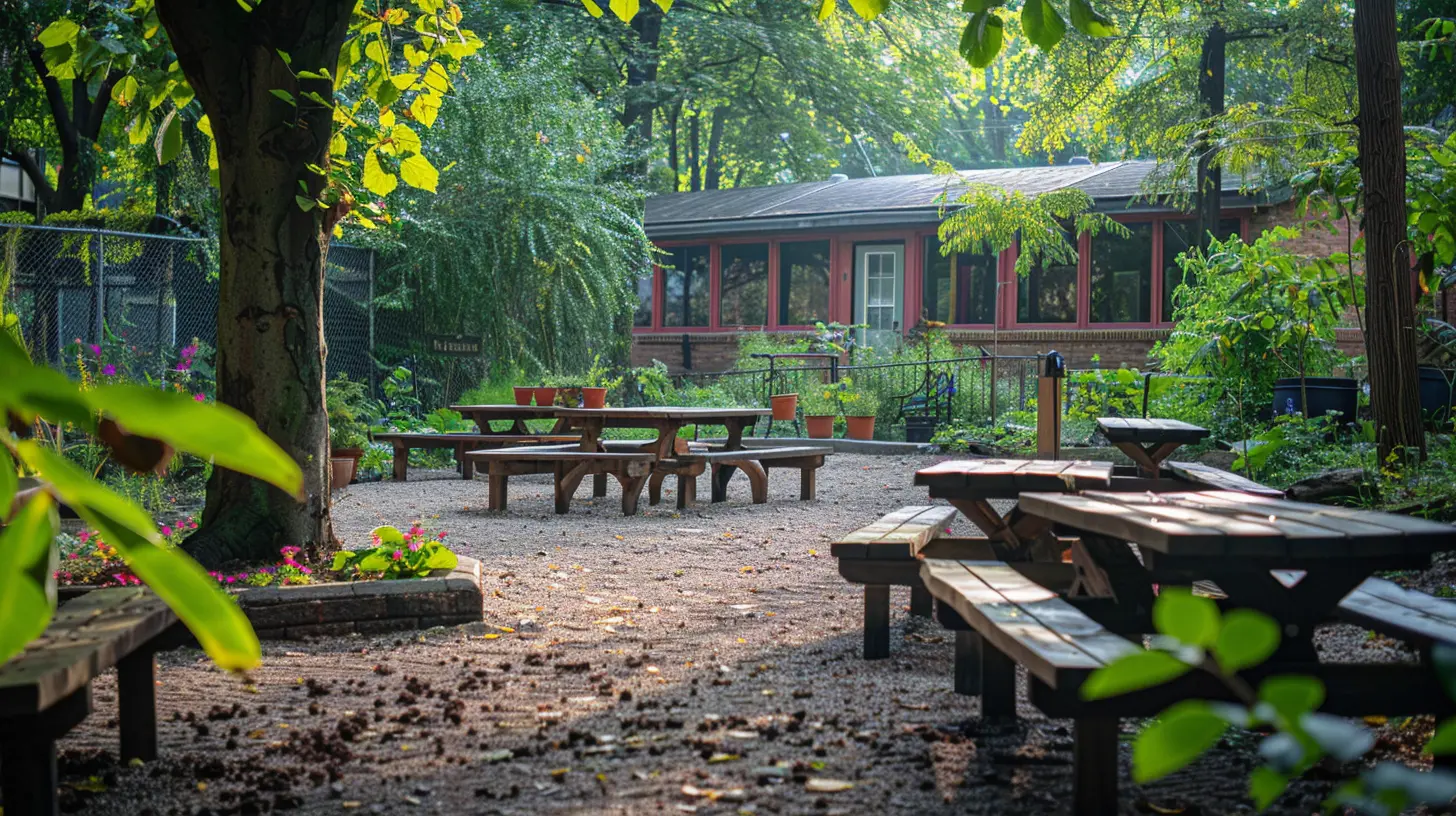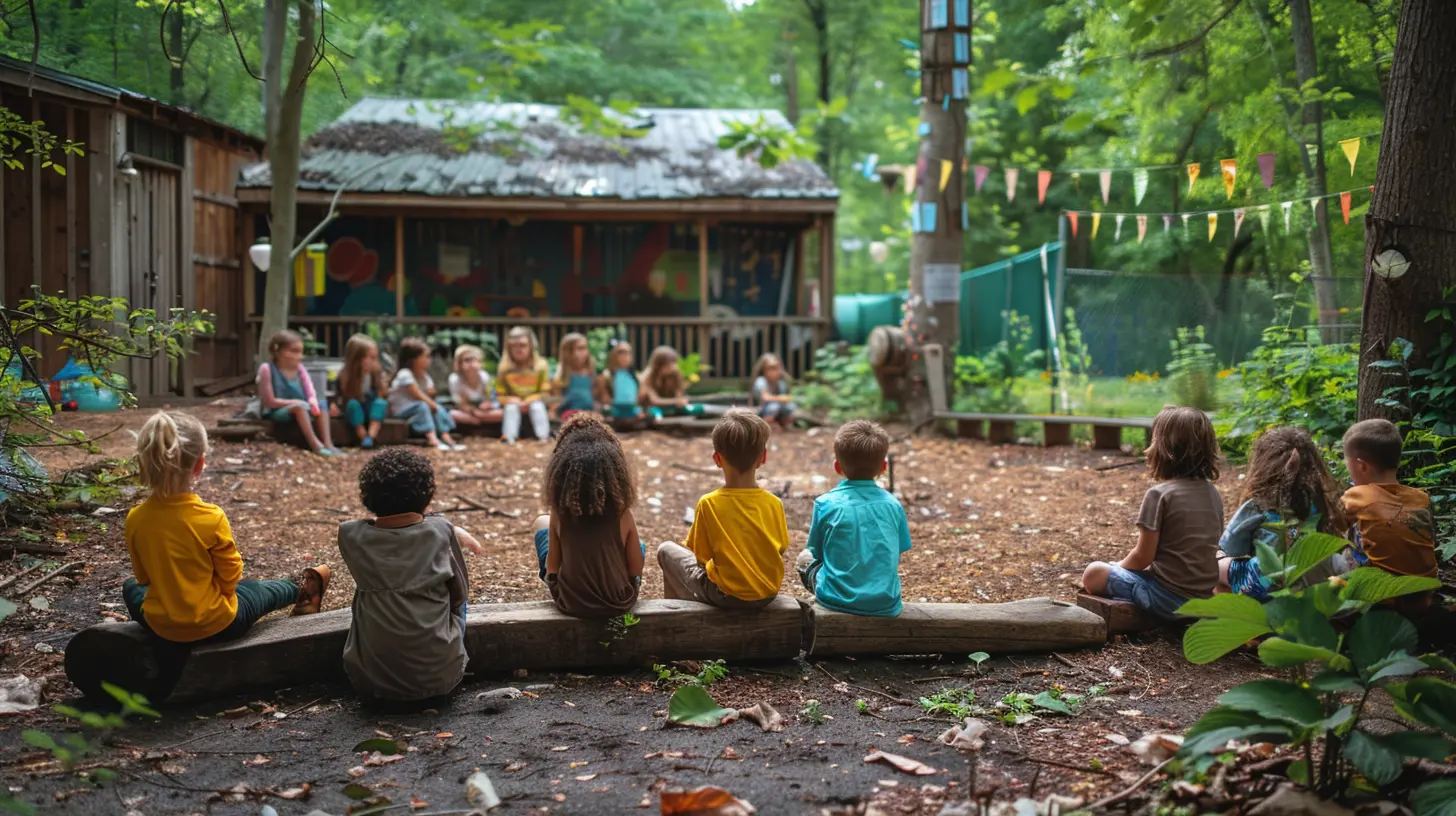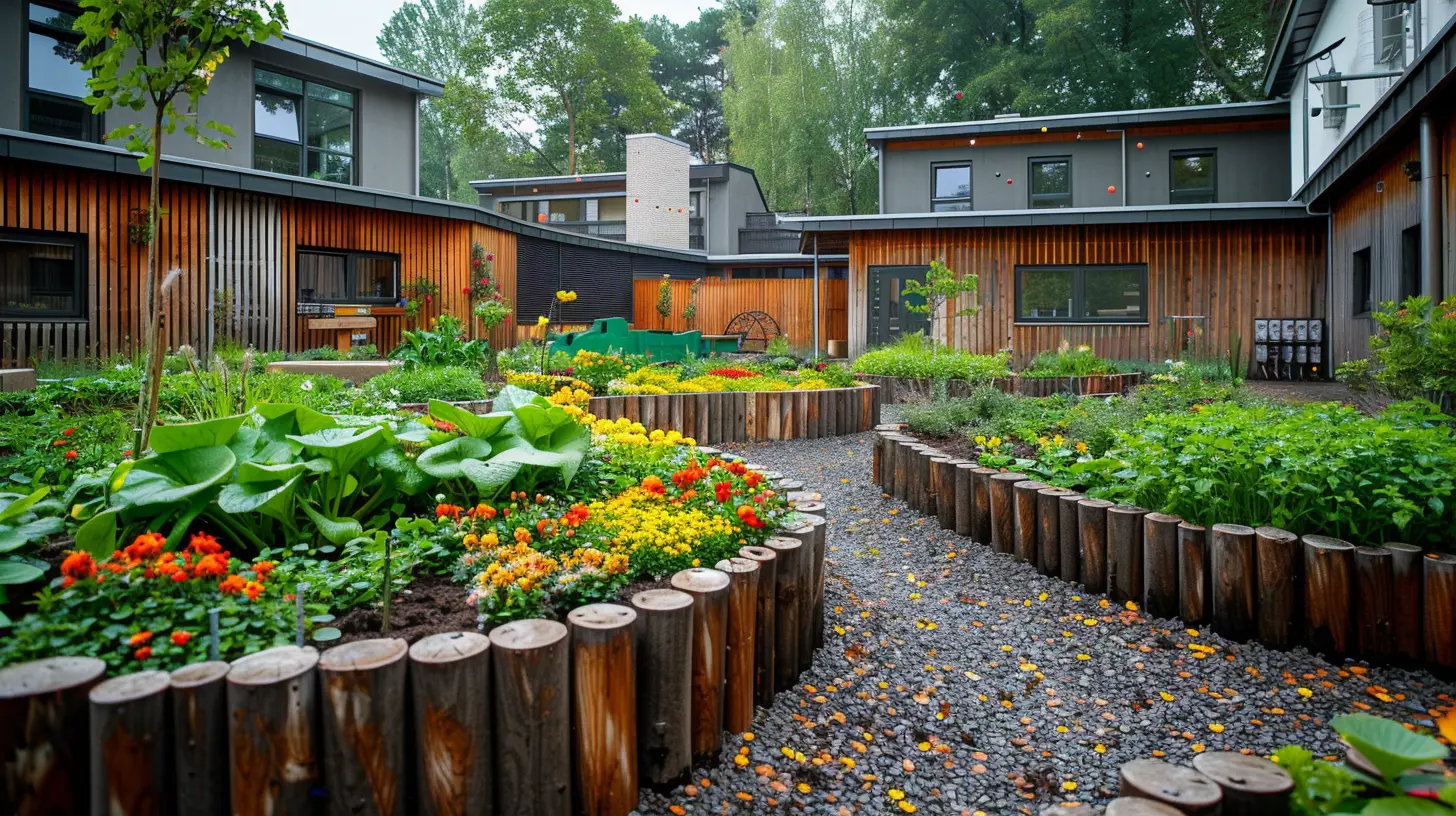Creating Sustainable Outdoor Classrooms for Every School
27 July 2025
In today’s fast-paced digital world, students are often cooped up in traditional classrooms, surrounded by fluorescent lights and concrete walls. But what if we flipped the script? What if we took learning outside—into the sunshine, under the sky, with birds chirping and trees swaying in the background? Enter the idea of sustainable outdoor classrooms.
They're not just a passing trend. These eco-friendly spaces are revolutionizing education—connecting students with nature and fostering deep, hands-on learning. If you're thinking, "That sounds amazing, but isn't it expensive or complicated?"—stick around. We're diving into how schools of all sizes and budgets can create sustainable outdoor classrooms that are as practical as they are inspiring.
Why Outdoor Classrooms Matter
Let’s be real—kids are spending less time outdoors than ever before, and it’s taking a toll on their physical and mental well-being. Outdoor classrooms give students the chance to move, breathe, observe, and connect with the world beyond textbooks.They:
- Reduce stress and anxiety
- Boost creativity and critical thinking
- Encourage collaboration and hands-on learning
- Improve focus and academic performance
Plus, with the flexibility of outdoor learning, educators can adapt lessons for science, art, reading, or even math—all while embracing the environment as a natural teaching tool.
What Makes an Outdoor Classroom “Sustainable”?
Great question! A sustainable outdoor classroom isn’t just a patch of grass with a chalkboard. It’s thoughtfully designed to benefit both students and the environment.Here’s what sets it apart:
- Eco-Friendly Materials: Think recycled wood for benches, repurposed tires for planting beds, or rain barrels for irrigation.
- Self-Sustaining Features: Solar lighting, composting systems, edible gardens, and native plant landscaping that needs minimal upkeep.
- Minimal Environmental Impact: The space should blend naturally with the surroundings and avoid harming local ecosystems.
By designing spaces that work with nature instead of against it, schools can create lasting, low-cost, low-maintenance learning environments.
How To Build a Sustainable Outdoor Classroom (Even on a Budget)
Now, let’s get to the good stuff—how to actually make it happen.1. Start With a Vision (and a Team)
Before anyone grabs a shovel, get your team together. This could include:- Teachers
- Students
- Parents
- Local community members
- Environmental experts
Work together to map out your goals. Do you want a garden? Outdoor seating? A weather station? A composting area? Dream big, then prioritize based on budget and space.
2. Choose the Right Location
You don’t need acres of land or forest (though that would be awesome). Even a small courtyard, rooftop, or patch of yard can work wonders.Look for:
- Safe, easily accessible spots
- Areas with natural shade or the potential to add shade structures
- Places relatively sheltered from noise and distractions
If you’re short on space, get creative—vertical gardens and modular furniture can turn tight spots into productive classrooms.
3. Use What You’ve Got
One of the coolest parts of creating a sustainable outdoor classroom is that you don’t need fancy materials to get started.Repurpose, reuse, and recycle:
- Leftover pallets as seating or planting beds
- Old benches or picnic tables for group work
- Painted cinder blocks for visual markers or mini seats
- Discarded tires or logs as natural play or sitting areas
Nature is your best friend—and your best supplier.
4. Incorporate Natural Elements
Use the environment as part of the learning. You can:- Plant native species to attract pollinators
- Build a sensory garden with herbs and textured plants
- Add bird feeders or insect hotels
- Label trees and plants with educational signs
Every element can teach something—from ecosystems to biology to environmental responsibility.
5. Plan for All Seasons
A common concern? "What about when it rains or snows?"Good news—you can absolutely make this work year-round with a little planning:
- Install retractable awnings or pergolas with climbing plants for shade and rain protection
- Use weather-resistant furniture
- Consider creating zones for different weather-related activities (like a covered area for rainy-day storytelling)
And honestly? A little mud and wind can turn an average lesson into an unforgettable adventure.
Funding & Support: It’s More Accessible Than You Think
Money shouldn't be a deal-breaker. In fact, many schools have built amazing outdoor classrooms with little to no budget.Here’s how:
- Grants: Look into local, state, and national education and sustainability grants.
- Donations: Approach local businesses, garden centers, or lumber yards.
- Fundraisers: Host bake sales, walkathons, or community cleanups to rally support (and raise dollars).
- Partnerships: Involve local environmental groups, nonprofits, and universities.
Hint: When people see kids learning outdoors, engaged and thriving—they want to help.
Real-Life Learning in Action
Outdoor classrooms aren’t just about being outside. They’re about changing the way we teach and learn.Imagine this:
- A math class measuring garden plots and calculating perimeter
- A science lesson analyzing soil samples and monitoring plant growth
- Art students sketching seasonal changes or building sculptures from natural materials
- Literature circles read under a tree, inspired by the sounds of nature
It’s education with real-world connections—and students don’t forget that kind of stuff.
Involving Students in the Process
Want your outdoor classroom to really stick? Put students at the heart of it.Let them help:
- Design the layout
- Build garden beds
- Create signs and artwork
- Plan what to plant
- Document change over time for school projects
When they take ownership, you're not just building a classroom—you’re building future stewards of the environment.
Maintenance: Keep It Simple & Smart
Yes, it needs upkeep—but nothing outrageous.Consider these low-fuss strategies:
- Pick native plants that don’t need daily watering or pampering
- Use mulch to reduce weeds and retain soil moisture
- Set up a student-led garden club to handle basic maintenance
- Schedule flexible “classroom care” days as school events
Like any space, a little love goes a long way. And bonus—maintenance itself is a learning opportunity in responsibility, cooperation, and environmental care.
Outdoor Learning & Equity: Making It for Everyone
Equity matters. Not all schools have the same resources. But every child deserves the chance to learn in a peaceful, engaging outdoor setting.To make it happen:
- Start small—a reading circle or potted plant station is better than nothing
- Share resources and ideas with nearby schools
- Collaborate with organizations focused on educational equity
- Advocate for policy changes that support sustainable education infrastructure
Nature belongs to all of us. Let’s make sure our kids feel that truth in the places where they learn.
The Future of Education is Green
Picture this: Instead of four walls, the classroom has trees. Instead of whiteboards, it has garden beds. Instead of screens, students are staring at clouds, bugs, and blossoms—asking questions and searching for answers right there in the moment.That’s not just education. That’s transformation.
Creating sustainable outdoor classrooms isn’t a luxury. It’s a powerful shift toward healthier, more connected, more meaningful learning. And best of all? Every school can do it—with a little creativity, community, and care.
Are you ready to take the classroom outside?
all images in this post were generated using AI tools
Category:
Environmental EducationAuthor:

Bethany Hudson
Discussion
rate this article
1 comments
Winona Allen
Outdoor classrooms provide invaluable learning experiences. Investing in sustainable designs not only enhances education but also fosters environmental stewardship in students. Every school should prioritize this initiative!
August 15, 2025 at 3:16 AM

Bethany Hudson
Thank you for your insightful comment! I completely agree—sustainable outdoor classrooms are essential for enriching education and encouraging environmental responsibility among students. Your support for this initiative is vital!


